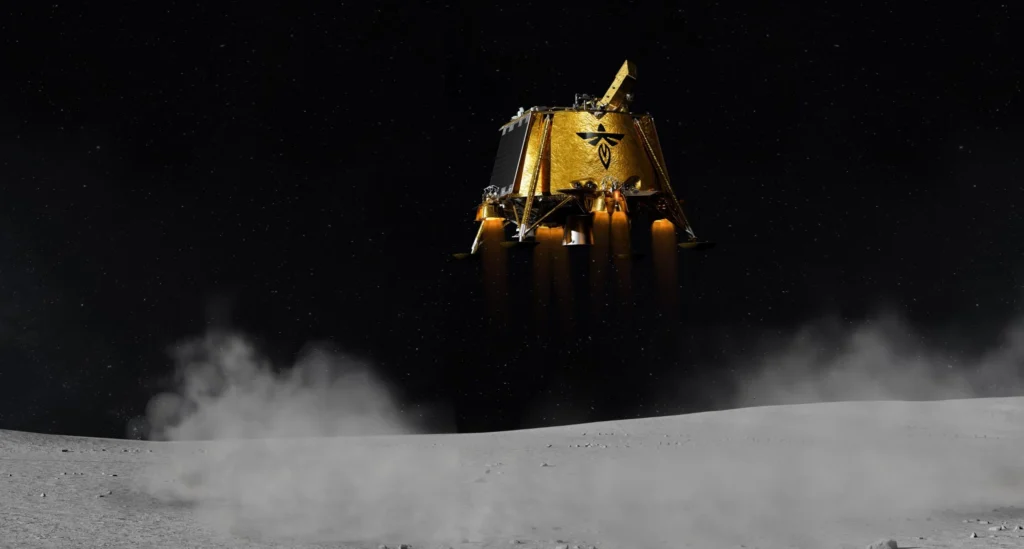After facing several challenges in lunar exploration, NASA has achieved a significant milestone with the successful completion of the Blue Ghost lunar mission. This mission not only marks a turning point for NASA but also sets a new standard for commercial partnerships in space exploration.
The Journey to Success
The Blue Ghost lunar mission, developed by Firefly Aerospace in collaboration with NASA, was launched on January 15, 2025, from NASA’s Kennedy Space Center in Florida. The mission aimed to deliver scientific instruments to the Moon’s surface, specifically targeting the Mare Crisium region near Mons Latreille. This area was chosen for its geological significance and potential to provide insights into the Moon’s composition and history.
After a 45-day journey, the Blue Ghost lander successfully touched down on the lunar surface on March 2, 2025. This achievement marked the first fully successful commercial Moon landing, demonstrating the growing capabilities of private aerospace companies in supporting NASA’s lunar ambitions.
Mission Objectives and Achievements
The primary goal of the Blue Ghost mission was to deploy ten scientific instruments as part of NASA’s Commercial Lunar Payload Services (CLPS) initiative. These instruments were designed to conduct various experiments and gather data to advance our understanding of the lunar environment. Key objectives and accomplishments of the mission include:
- Lunar Subsurface Exploration: The Lunar Instrumentation for Subsurface Thermal Exploration with Rapidity (LISTER) aimed to measure the Moon’s thermal properties by drilling into the lunar surface.
- Sample Collection: The Lunar PlanetVac (LPV) demonstrated a novel method of collecting lunar soil samples using pneumatic technology, showcasing a fast and efficient alternative to traditional robotic arms.
- Dust Mitigation Studies: The Electrodynamic Dust Shield (EDS) tested technologies to prevent lunar dust from accumulating on surfaces, a critical challenge for future lunar missions.
- Radiation Tolerance Testing: The Radiation Tolerant Computer (RadPC) evaluated the performance of computing systems in the Moon’s radiation environment, providing valuable data for future mission planning.
- Magnetic Field Imaging: The Lunar Environment Heliospheric X-ray Imager (LEXI) captured images to study the interaction between solar wind and Earth’s magnetic field, enhancing our understanding of space weather phenomena.
Throughout its 14-day operation on the lunar surface, the Blue Ghost lander collected approximately 119 gigabytes of data, including high-definition images and videos of lunar phenomena such as a total solar eclipse and the lunar sunset.

Capturing the Lunar Sunset
One of the mission’s most captivating achievements was capturing high-definition images of a lunar sunset. Positioned at the base of Mons Latreille in the Mare Crisium basin, the Blue Ghost lander documented the horizon as the sun set, with Earth and Venus visible in the background. These images provide a unique perspective of the lunar environment and contribute to our understanding of the Moon’s atmospheric conditions.
Overcoming Challenges
The mission was not without its challenges. The Moon’s harsh environment, characterized by extreme temperature fluctuations and prolonged periods of darkness, posed significant obstacles. The Blue Ghost lander operated for over five hours into the lunar night before ceasing communication, demonstrating resilience and the effectiveness of its design.
Implications for Future Missions
The success of the Blue Ghost lunar mission has several important implications for the future of lunar exploration:
- Validation of Commercial Partnerships: The mission underscores the viability of commercial space providers in supporting NASA’s objectives, highlighting the potential for increased collaboration between public and private entities in space exploration.
- Advancement of Lunar Science: The data collected will inform future missions, contributing to a deeper understanding of the Moon’s environment and aiding in the development of technologies for sustained lunar presence.
- Preparation for Human Exploration: Insights gained from the mission will assist in planning for future human missions to the Moon, addressing challenges such as dust mitigation, radiation protection, and resource utilization.
Looking Ahead
Building on the success of this mission, Firefly Aerospace has announced plans for subsequent Blue Ghost missions in 2026 and 2028. These missions aim to further humanity’s exploration and study of the Moon, paving the way for a sustained presence on our nearest celestial neighbor.
The Blue Ghost lunar mission represents a significant leap forward in our quest to explore and understand the Moon. By overcoming previous setbacks and demonstrating the effectiveness of commercial partnerships, NASA and its collaborators have set the stage for a new era of lunar exploration, bringing us closer to unlocking the mysteries of our celestial companion.
Reed Hastings Donates $50 Million to Bowdoin College for AI Program






